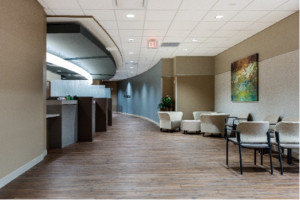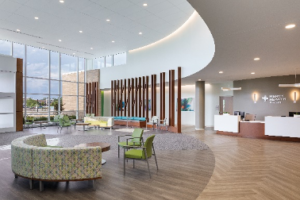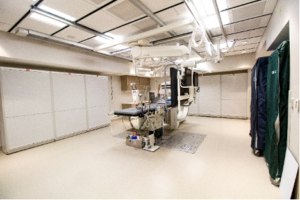2021 Healthcare Construction Trends
2020 has seen several massive changes within the healthcare construction industry. From a new focus on automation to the need for more space, 2021 is sure to produce several new trends when it comes to building hospitals, urgent care centers, and other facilities. We’ve put together a few of our predictions for 2021 healthcare construction trends.

Need: More space.
Solution: Wider hallways and larger rooms for space between people.
2020 has shown healthcare facilities that they need more space not only for a larger number of people but also for greater distancing between those people. Hospitals and other healthcare facilities are often bustling with people who have a variety of health issues. These buildings need the space to hold all of those people, as well as wider hallways to travel throughout the building without passing close by another person.
Flexible layouts will also be a huge part of this change. For facilities that do not have the funds or ability to make huge changes to their infrastructure, installing dividers or other elements to separate people will become routine.
Need: Touchless doorways, faucets, etc.
Solution: A greater focus on automation.
In 2021, we predict that there will be a greater focus on automation within healthcare construction. Hospitals and urgent care facilities will cut down on the number of surfaces that have previously required touching, such as doorways, faucets, hand sanitizer dispensers, and more.
In addition to a greater emphasis on automation, automatic doors will also give healthcare facilities greater control over where people within the building are permitted to go. If there is a section of the building that needs to be closed off, healthcare workers can automatically lock the selected doors rather than have to do so manually. These will work not only in emergency situations but also to prevent the public from going into spaces where they aren’t permitted.

Need: Safer, cleaner waiting room areas.
Solution: Lounge-style seating with antimicrobial surfaces.
We anticipate that healthcare facilities will look to invest in waiting room seating that allows for people to spread out comfortably with adequate space. These surfaces will also be easily cleaned and sanitized and made of antimicrobial material. Most people think of polyester, polyester-vinyl composites, vinyl, and even acrylics as antimicrobial materials. Hard surfaces and chair coverings are also great options since they can be easily cleaned, especially of spills and other difficult-to-clean accidents.

Need: Cleaner air and better circulation of said air.
Solution: Updated HVAC systems and standards.
Airborne diseases can circulate through a building through their heating, ventilation, and air conditioning (HVAC) systems. Experts are currently analyzing how these systems can be updated to provide a continuous flow of clean air, especially to those in healthcare facilities. Experts are also discussing a possible re-standardization of commercial HVAC systems to allow for buildings to meet a minimum requirement in order to be converted into healthcare facilities should the need arise.
As the changes above are slowly but surely implemented, healthcare providers are continually working to provide their services to the public. We predict that the use of telehealth services will continue until these measures can be put into place.
2020 has given the healthcare construction industry a variety of challenges to overcome. Some trends may become permanent changes that will influence the industry for years to come. Others may fade with time as the impacts of 2020 fade. If you’re interested in learning more about healthcare construction and how we can help, don’t hesitate to contact us!
Sources:
https://www.wsp.com/en-US/insights/2020-covid-19-impact-on-hvac-standards-ashrae
https://www.modernhealthcare.com/technology/how-covid-19-pandemic-will-change-healthcare-delivery
https://www.bdcnetwork.com/are-hospitals-prepared-next-pandemic
